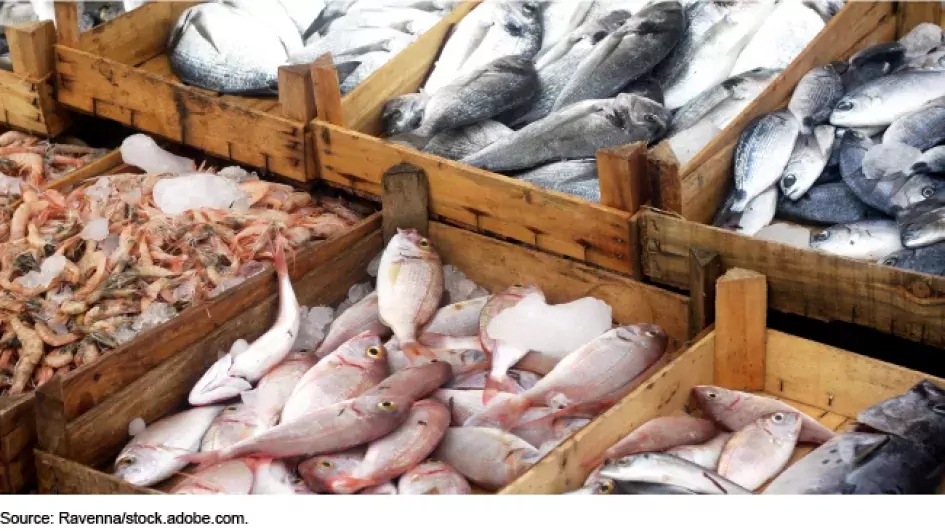Tackling Illicit Fishing At Sea and Ports Before It Ends Up on Your Plate
Attention seafood lovers—some of your favorite imported fish might be vulnerable to illegal, unreported, or unregulated fishing practices. These illicit fishing practices can include a number of activities, such as using prohibited gear or violating international agreements. These activities undermine the economic and environmental sustainability of the fishing industry in the U.S. and globally. Additionally, they can jeopardize food security and contribute to transnational crime by supporting criminal networks—such as narcotics trafficking—or other illegal activities at sea.
In today’s WatchBlog post, we’ll look at our recent work on how agencies are tackling this issue, both at sea and at U.S. ports, and what more needs to be done.
Image

Combatting illegal, unreported, and unregulated fishing at sea
The ocean covers more than 70% of the planet, so identifying illegal, unreported, and unregulated (sometimes known as IUU) fishing can be a difficult task. The U.S. collects and analyzes information from a variety of sources to identify such fishing on the high seas (areas outside of any one nation’s jurisdiction). For example, technology for tracking vessel location at sea helps U.S. agencies identify movements of fishing vessels on the high seas that may indicate illegal, unreported, and unregulated fishing.
The U.S. works with other nations through multilateral agreements to collectively prevent illegal, unreported, and unregulated fishing. Agreements may, for example, limit the number and types of fish that can be caught in a specific region. In 2019, officials from Japan, China, Russia, South Korea, Canada, and the U.S. collaborated to patrol areas of the northern Pacific Ocean covered by these types of agreements, and found 58 violations of conservation measures through various multilateral conservation agreements.
Coast Guard Officials Preparing to Board and Inspect a Fishing Vessel
Image

Combatting illegal fishing imports
The U.S. imports as much as 70-80% of the seafood we purchase. While it’s impossible to pin down how much of that seafood was caught through illegal, unreported, and unregulated fishing, the U.S. International Trade Commission estimated that about 11% of the value of the U.S.’s seafood imports in 2019 were derived from it.
In our new report, we looked at some of the actions federal agencies have taken to prevent seafood caught through these illicit fishing practices from ending up on your plate. For example, the National Marine Fisheries Service (NMFS) and U.S. Customs and Border Protection (CBP) work together to target such seafood imports. Their efforts include things like monitoring incoming seafood imports that fit a pattern of concern, such as importers with past trade violations. NMFS and CBP also share information in support of this goal. For example, these agencies share information through a CBP interagency group that works to combat a variety of import violations, including importing seafood caught through illegal, unreported, and unregulated fishing. However, NMFS officials told us they weren’t always able to get timely information through their collaboration, which could undermine time-sensitive efforts to target, investigate, or identify imports of concern. Because of this, we recommended that CBP work with NMFS to ensure that it has timely access to the information it needs to combat imports of seafood caught through illegal, unreported, and unregulated fishing practices.
Learn more about our work on how the federal government combats illegal, unreported, and unregulated fishing outside US waters by reading our full reports.
- Comments on GAO’s WatchBlog? Contact blog@gao.gov


